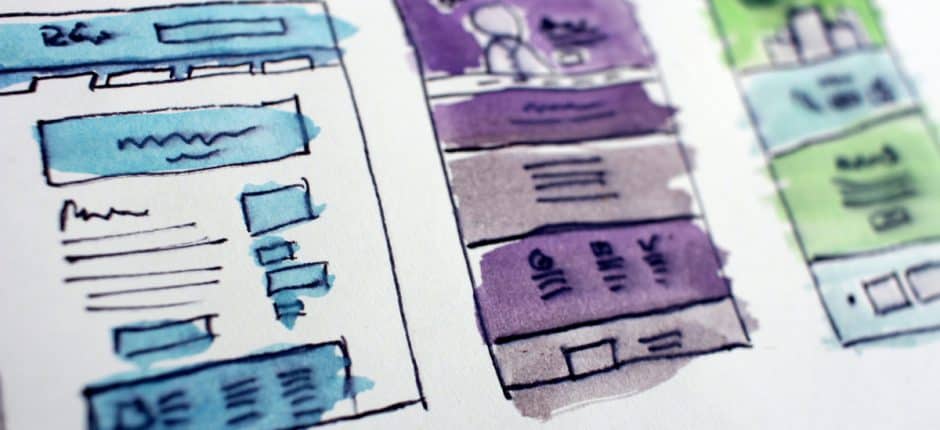This post is sponsored by 99Designs. We’re partnering with 99designs for an exclusive deal—sign up here and get a $40 discount on your next design project.
At first glance, branding seems like something that should be handled internally—after all, your company’s identity is personal. However, there are many reasons to outsource branding design, including saving time, cutting costs, and leveraging the expertise of specialists, all of which will help you grow your business.
Outsourcing your branding means putting your logo, web design, content creation, graphic design, and more, in the hands of seasoned experts, improving the overall quality. It also means you only pay for what you need, so you don’t have to hire a full-time designer when you only have a part-time amount of work.
Of course, it’s not so easy if you don’t know what you’re doing or have never done this before. If you’re interested in outsourcing your branding, here’s what you need to know to get started.
Keep Reading: Hiring a B2B Content Marketing Agency: How to Find the Right One
The Benefits of Outsourcing Branding Design
You’re thinking about outsourcing your branding design, but do you know all the ways you can benefit if you do? Here are the many ways that this creative support can be helpful for your business.
1. Leverage a Professional’s Expertise
Perhaps the best reason to outsource your branding design is that you get access to professional expertise. It takes many years to master all the intricacies of design, which encompasses logo creation, web design, product packaging design, and even areas like merchandising and packaging.
If you think your business is too small to think about this, think again. Visual quality is not just for big businesses. In fact, it can help out small businesses that need attention more than household names. This study showed found that website users can form an opinion in 0.05 seconds. That’s not a lot of time for your brand to make a good first impression!
Seasoned designers know the best design strategies to get your brand noticed. Plus, today’s modern consumer can pick up on the difference between the work of an expert and a DIY project, so it pays to look professional.
2. Save Time
Outsourcing your branding design frees up time for you and your staff to work on more important duties. After the initial briefings, all you have to do is wait for the designs to be reviewed and approved.
If you tend to wear a lot of hats, it may be hard to let go of this control—but doing so frees up more time than you might think. If you do the design yourself, you have to put in extra hours not only doing the work itself but also learning new software and brushing up on branding concepts.
That’s time you could be spending on managing the other areas of your business.
3. Spend Less
When you outsource your branding and design needs, you pay only for what you need. Hiring an in-house designer makes financial sense only when there’s plenty of design work coming in. According to Payscale the average graphic designer salary is $47,417 per year. Until your business is ready to make that commitment, it often makes more sense to start with done-for-you design companies, freelancers, and contractors.
You can even hire individual specialists for the areas you need. For example, if you need a new logo, you can hire a specialist logo designer for a one-time fee, and still keep the rights to the logo design in perpetuity. Other branding needs like website designs, product packaging, merchandise designs, and more can all be done as a one-time project as well.
If you like working with a particular designer, you can always contact them again the next time they’re needed. This is helpful because, the better they know your brand, the better their work will be.
4. Get an Outside Perspective
Branding is personal, and because it’s so personal, sometimes it’s best to let an outsider handle it. Your own perceptions, attitudes, experiences, and biases can get in the way of the optimal branding design for your company.
Outsourcing branding design means a third party is going to take an impartial look at your business and decide the best way to make a good impression. Outside freelancers and companies are closer to your customers than you are in terms of perceiving your brand as a blank slate, so they can make the best decision for your brand without the emotional connection.
5. Experiment With New styles
You or your employees might be able to do some design work, but what if you want to try something new or experiment with different styles? Outsourcing your branding opens up the opportunity to play and test, without the limits of what you or your team can do—or even think of.
What’s more, styles change over time. It’s wise to update your website and even your logo every few years to stay current. Good professional designers know what looks modern and what looks behind the times, especially freelancers who are constantly hearing requests from multiple clients.
Keep Reading: 5 Reasons to Outsource Your Marketing Team Instead of Hiring In-House
How to Outsource Your Branding Design
If you’re seriously considering outsourcing your branding, you need to know to expect and how to make the most of the engagement. Use this short guide to get familiar with the process from start to finish.
1. Decide What You Need
Before you begin scouting, you need to prepare. You don’t know who or what you’re looking for if you don’t know what you need. Start by determining the scope of the project: what exactly do you need to be designed? As mentioned above, one major advantage of outsourcing is only paying for what you need, so your first step should be defining your necessities at the moment.
On the heels of that comes your budget. What can you afford? This will be crucial so you know who you can afford and who you can’t—and whether you’re willing to stretch the budget for the right person.
The more abstract choices, such as design styles and your brand personality, are also important to help your designer understand your brand. Later you can input on these areas, or ask them to build it from scratch, but it helps to have a preliminary idea of what you’re aiming for.
All of this can go into what’s called a “project roadmap,” which is where you want to include as many details as possible. Try to be as specific as possible when it comes to:
- deliverables
- deadlines and time frame
- milestones and KPIs
- individual costs
- necessary features or attributes
- end goals
Remember, the better you define what you want going into the project, the easier it will be for your designer to deliver just that. If you start with vague or ambiguous guidelines, you aren’t setting anyone up for success.
2. Choose a Method for Recruitment
Hiring freelancers isn’t the same as hiring staff. In general, you have a few options—design platforms, contractors/freelancers, or agencies. Here’s what you need to know about each option.
Design platforms: The most convenient approach to outsourcing design work is to use a design platform. These are service providers that manage a large community of designers with many different specialties, styles, and price ranges. When a company needs design work, the design platform connects them with the best match.
Each design platform offers something a little different, from pricing to scope to other features like ownership rights. Some freelancing platforms have designers in addition to other freelancers needed for businesses, and others, like 99designs, specialize in design and offer design contests, where clients submit what they’re looking for and multiple designers submit samples of the completed works.
From there, the client looks at all their options and chooses the one they like best.
Contractors/Freelancers: If you prefer to work with one person or want to start with a small project, freelancers or contractors are a good option. Depending on where you post the job (I.E. UpWork or Dribbble) and what you’re asking for, you can receive a wide array of applicants across different skill levels and specialties.
This approach can be unwieldy at times, but it is the most direct. The advantage, however, is that you’re able to negotiate directly with the designer and arrange customizable terms.
Agency: Using a design agency is a lot like approaching a freelancer one-on-one in that you still have to find one that suits you—and there are many. The advantage of this option is that design agencies tend to have more options and breadth when it comes to styles and specialties, making it a time-saver if you have more than one concurrent project. The downside, though, is that design agencies tend to be the most expensive method of the three.
3. Write a Design Brief
Most designers, agencies, and platforms work with what’s called a “design brief,” which is a document that outlines what the client wants. For example, a logo design brief describes the type of logo (I.E. wordmark, lettermark, etc.), artistic style, coloring, and brand details like values and identity. You can also include other creative aids, such as a mood board or existing content to emulate, to help keep the designer on track.
The brief is also a good time to iron out details like deadlines and payment. It’s good to have these in writing early on to avoid conflicts later.
The key to writing a good design brief is to be thorough—this is where your earlier preparations come in handy. Anything left unsaid will be determined by the designer, so if you have any preferences, they should be included here. If you do want the designer to decide what’s best based on their expertise, simply state that in the brief.
4. Build a Relationship
Even though they’re more independent, outside designers are still part of your team and when you build this culture and relationship with them, the outcome is always better.
As with all relationships, the key is communication. By way of the brief and your initial conversations, tell your freelancer exactly what you expect from them. In turn, encourage them to be open with you. Offer transparency and give them the freedom to ask questions. Remember that they’re not as familiar with your business as you are, so make sure there are no blind spots in their understanding.
Don’t be afraid to give design feedback as constructive criticism; revisions are part of the job. Just be explicit about what you want to be changed. Comments like “I don’t like this color” or “something seems off,” are too vague to be useful. Give direct advice, like, “This color doesn’t fit our brand personality so I think something more like X would be better.”
Building a strong relationship won’t just help the results of this project, it also lays the groundwork for success in future projects. When you find a designer you like, you can hire them again and again as needed, saving you time on recruiting a new one.
Keep Reading: 5 Content-Based SEO Services That Will Drive Long-Term Results
Don’t Underestimate the Benefit of Brand Design Outsourcing
If you’re not a designer, brand design outsourcing just makes sense, saving you money and improving the quality of your visual brand at the same time.
Want to outsource your design work and save $40? Jessica Thiefels is partnering with 99designs for an exclusive deal—sign up here and get a $40 discount on your next design project.



